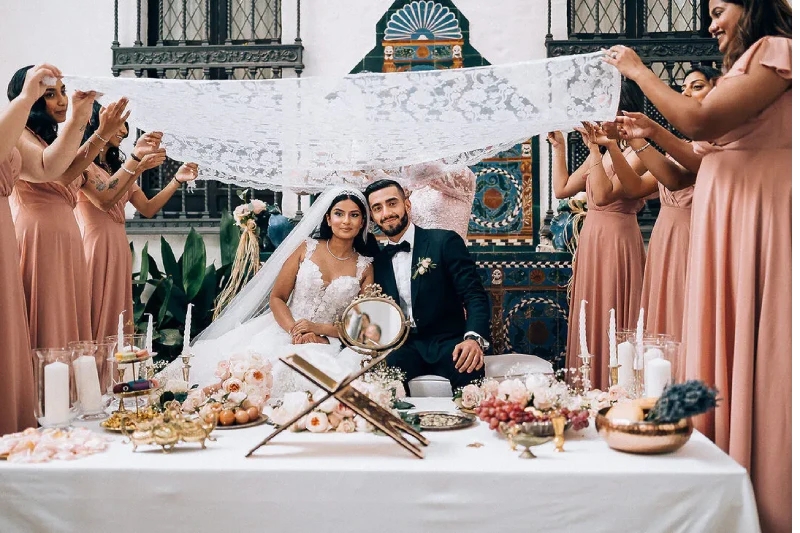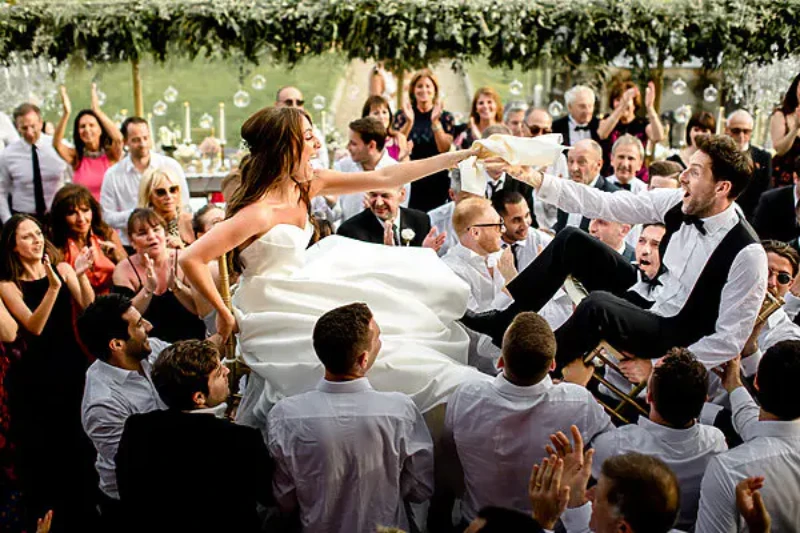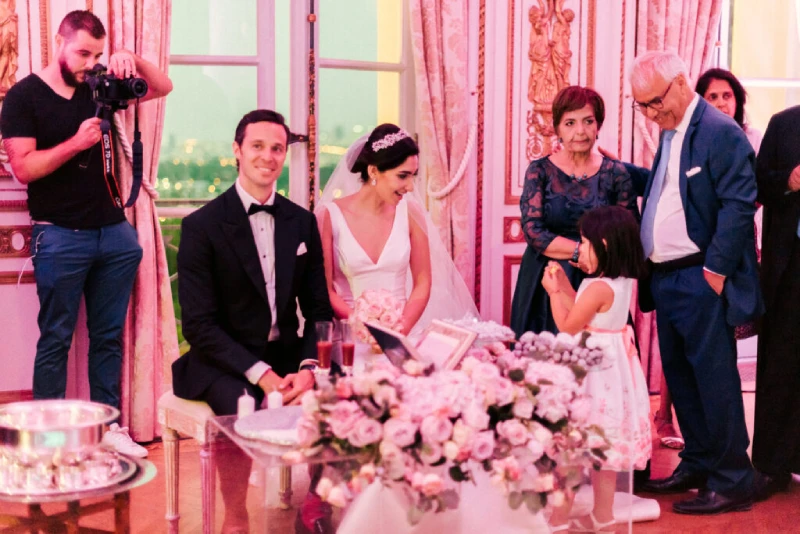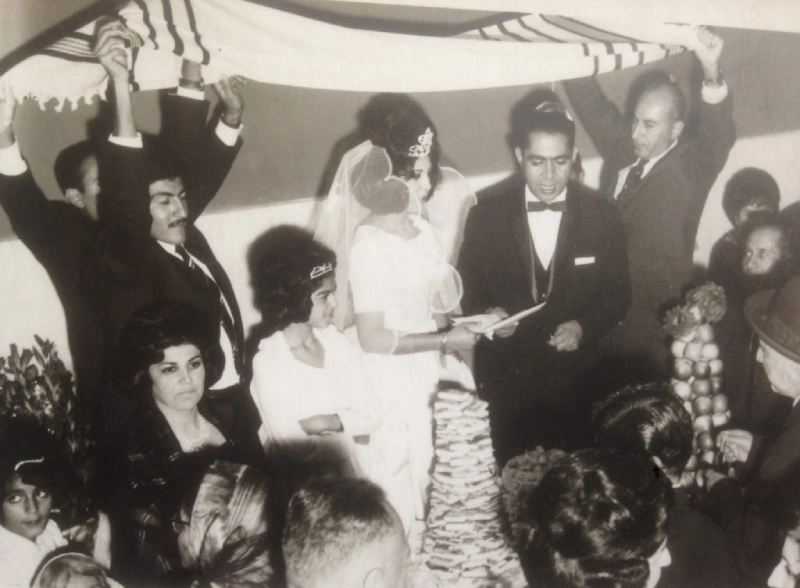Persian-Jewish weddings are a vibrant tapestry of ancient customs and joyous celebrations, weaving together rich cultural heritage and heartfelt moments. From the vibrant colors of traditional attire to the profound significance of each ritual, these weddings are a feast for the senses and a deep expression of love and commitment. As you embark on this enchanting journey through Persian-Jewish wedding traditions, prepare to be immersed in timeless practices that honor both heritage and family. Expect to see beautiful ceremonies, appetizers that tantalize the taste buds, and heartfelt blessings that echo through generations. Each aspect, from the pre-wedding festivities to the lively celebrations, is designed to create unforgettable memories. So, let’s dive into what to expect at a Persian-Jewish wedding and explore the beautiful traditions that make these occasions truly special.
Historical Background of Persian-Jewish Culture
Persian-Jewish culture boasts a rich history that dates back over 2,700 years. The Jewish community in Persia, now modern-day Iran, has long been an integral part of the country’s social and cultural fabric. When the Assyrian Empire conquered the Northern Kingdom of Israel in 722 BCE, many Jews were exiled to various parts of the Assyrian Empire, including Persia. This migration introduced Jewish traditions to the Persian Empire, where they were embraced and interwoven with Persian customs. Over the centuries, this blend of traditions has evolved, creating a unique Persian-Jewish culture that is celebrated and cherished to this day.
The Persian-Jewish community has made significant contributions to Persian society, particularly in the realms of art, science, and commerce. Despite facing periods of persecution and hardship, Persian Jews have managed to preserve their religious practices and cultural heritage. Their resilience and ability to adapt while maintaining a distinct identity have been key to the endurance of their traditions. This deep-rooted history plays a crucial role in modern Persian-Jewish weddings, where ancient customs are honored and celebrated with great fervor.
Understanding the historical context of Persian-Jewish culture is essential for appreciating the significance of their wedding traditions. These weddings are not just a union of two individuals but a celebration of a community’s enduring legacy. They serve as a testament to the rich cultural tapestry that has been woven over millennia, reflecting the perseverance, faith, and vibrant spirit of Persian Jews. As we delve into the various aspects of Persian-Jewish wedding traditions, this historical backdrop provides a foundation for understanding the depth and beauty of these age-old practices.
Key Rituals in Persian-Jewish Weddings
Persian-Jewish weddings are replete with rituals that hold profound symbolic meaning. One of the most significant pre-wedding customs is the “Shabbat Kallah” or “Shabbat Chatan,” where the bride and groom are honored separately on the Shabbat before the wedding. Friends and family gather to offer blessings and celebrate the upcoming nuptials. This tradition emphasizes the community’s role in supporting the couple as they embark on their new journey together.
On the wedding day, the ceremony typically begins with the “Kabbalat Panim,” where the bride and groom receive guests in separate rooms. The bride, often referred to as the “kallah,” is surrounded by female relatives and friends who sing, dance, and offer blessings. Meanwhile, the groom, or “chatan,” is similarly celebrated by male guests. This separation underscores the sanctity of the occasion and prepares the couple spiritually for the sacred union.
The most pivotal moment of a Persian-Jewish wedding is the “chuppah” ceremony, where the couple stands under a canopy symbolizing the home they will build together. Key rituals during the chuppah include the “Kiddushin” (betrothal) and the “Nissuin” (marriage), marked by the exchange of rings and the recitation of seven blessings, known as the “Sheva Brachot.” The ceremony concludes with the breaking of a glass by the groom, a reminder of the destruction of the Temple in Jerusalem and a symbol of the fragility of human relationships. These rituals, steeped in tradition, create a profound and unforgettable experience for all in attendance.
The Importance of the Ketubah in Persian-Jewish Weddings
The ketubah, or Jewish marriage contract, is a vital element of any Persian-Jewish wedding. This beautifully decorated document outlines the groom’s responsibilities and obligations to the bride, including financial support and mutual respect. The ketubah is more than just a legal contract; it is a testament to the couple’s commitment to each other and serves as a cherished keepsake for generations.
Traditionally, the ketubah is written in Aramaic, the ancient language of the Jewish people, although some modern versions may include translations in Hebrew or the local language. The document is signed by the groom and two male witnesses, often close friends or family members. This signing ceremony typically takes place before the chuppah and is witnessed by close family and friends, adding to the significance of the moment.
The ketubah is often artistically adorned with intricate designs and calligraphy, reflecting the couple’s heritage and personal tastes. It is usually displayed prominently during the wedding and later in the couple’s home. This beautiful tradition not only reinforces the couple’s legal and moral commitments but also serves as a reminder of their vows and the sacred bond they share. The ketubah’s enduring significance highlights the importance of love, respect, and mutual responsibility in a Persian-Jewish marriage.
Traditional Attire: What to Wear to a Persian-Jewish Wedding
Attire at Persian-Jewish weddings is a vibrant display of cultural pride and elegance. For the bride, traditional attire often includes a stunning gown that may incorporate Persian motifs and intricate embroidery. The dress is usually complemented by a veil, symbolizing modesty and reverence. Many brides also wear heirloom jewelry passed down through generations, adding a touch of familial history to their ensemble.
Grooms typically don a suit or tuxedo, though some may choose to wear traditional Persian garments. These might include a “jameh,” a long tunic, paired with trousers, often adorned with elaborate patterns and embroidery. The groom’s attire is a reflection of both his personal style and cultural heritage, blending modern fashion with traditional elements.
Guests at a Persian-Jewish wedding are encouraged to dress in elegant and festive attire. Women often wear colorful dresses or gowns, while men opt for suits or formal wear. The emphasis is on celebrating the joyous occasion with style and grace. The vibrant attire worn by all attendees contributes to the overall festive atmosphere, making the wedding a visually stunning and culturally rich event. Dressing appropriately not only shows respect for the couple and their families but also enhances the shared experience of this beautiful celebration.
The Role of Family and Community in Celebrations
Family and community play a central role in Persian-Jewish weddings, reflecting the importance of these connections in Persian-Jewish culture. The involvement of family begins long before the wedding day, with parents and relatives often playing a key role in the planning and preparation of the event. This collaborative effort underscores the collective nature of the celebration, where everyone comes together to support the couple.
During the wedding, the presence of family and community is felt at every turn. From the “Shabbat Kallah” and “Shabbat Chatan” to the chuppah ceremony and reception, loved ones are there to offer blessings, support, and joy. The participation of extended family and friends in these rituals highlights the communal aspect of the wedding, where the union of the couple is seen as a union of families and a strengthening of the community.
This strong sense of community extends beyond the wedding day. In Persian-Jewish culture, marriage is considered a cornerstone of society, and the support of family and friends is crucial in helping the couple build a successful and happy life together. The wedding serves as a reminder of this collective responsibility, fostering a sense of unity and shared purpose. The involvement of family and community in Persian-Jewish weddings is a beautiful expression of love, support, and continuity, ensuring that the couple is surrounded by a network of care and connection.
Unique Culinary Traditions at Persian-Jewish Weddings
Food is a central element of Persian-Jewish weddings, reflecting the community’s rich culinary heritage. The wedding feast, known as the “Seudah,” is a lavish affair featuring an array of traditional dishes that tantalize the taste buds and celebrate the joyous occasion. The menu often includes a mix of Persian and Jewish delicacies, creating a unique and flavorful dining experience.
Appetizers may include “kuku sabzi,” a herbaceous frittata, “tahdig,” the crispy rice dish that is a Persian staple, and an assortment of fresh salads and dips. The main course often features a variety of meats, such as “kebab” or “ghormeh sabzi,” a savory stew made with herbs, beans, and meat. Fish dishes, like “sabzi polo mahi” (herb rice with fish), are also popular, symbolizing prosperity and abundance.
Desserts are an essential part of the celebration, with sweets like “baklava,” “saffron rice pudding,” and “halva” making an appearance. These treats are often accompanied by traditional Persian tea, served in ornate glasses. The culinary traditions at Persian-Jewish weddings not only provide a feast for the senses but also symbolize the community’s rich cultural heritage and the joy of the occasion. The elaborate spread is a testament to the importance of hospitality and the shared experience of celebration through food.
Music and Dance: Celebrating with Joy
Music and dance are integral components of Persian-Jewish weddings, adding to the festive and joyous atmosphere. Traditional Persian music, often featuring instruments such as the “santur” (dulcimer), “tar” (lute), and “daf” (frame drum), sets the tone for the celebration. This music is characterized by its melodic and rhythmic complexity, evoking a sense of cultural pride and nostalgia.
The wedding reception typically begins with the “Baraat,” a lively procession where the groom is accompanied by family and friends to the wedding venue, often with music and dancing along the way. This is followed by the “Zaffa,” a grand entrance of the bride and groom into the reception area, accompanied by traditional music and cheers from the guests. The energy and excitement of these moments set the stage for a night of dancing and celebration.
Dancing is a highlight of Persian-Jewish weddings, with guests often taking to the dance floor to perform traditional dances such as the “Raghs-e Bandari” and the “Raghs-e Choobi.” These dances are characterized by their intricate footwork and expressive hand movements, reflecting the rich cultural heritage of the community. The music and dance at Persian-Jewish weddings create an atmosphere of joy and unity, bringing everyone together to celebrate the couple’s union and the vibrant culture they share.
Modern Adaptations of Persian-Jewish Wedding Traditions
While Persian-Jewish weddings are steeped in tradition, many couples today incorporate modern elements to reflect their personal tastes and contemporary lifestyles. One common adaptation is the blending of traditional and modern music during the reception, with DJs and live bands offering a mix of Persian, Jewish, and popular Western tunes. This fusion allows for a dynamic and inclusive celebration that resonates with guests of all ages.
Another modern adaptation is the customization of the ketubah. While the traditional text remains, many couples choose to add personalized vows or artwork that reflects their unique relationship. This allows the ketubah to serve not only as a legal document but also as a personal and meaningful keepsake. Additionally, some couples opt for more contemporary wedding attire, blending traditional elements with modern fashion trends to create a look that is both culturally respectful and stylish.
The venue and decor of Persian-Jewish weddings have also seen modern influences. While traditional settings such as synagogues and family homes remain popular, many couples now choose to host their weddings in hotels, gardens, or other scenic locations. Decor often blends traditional Persian and Jewish motifs with contemporary design elements, creating a visually stunning and culturally rich environment. These modern adaptations ensure that Persian-Jewish weddings remain relevant and meaningful, honoring tradition while embracing the present.
Conclusion: Embracing Tradition in Contemporary Celebrations
Persian-Jewish weddings are a beautiful fusion of ancient traditions and modern celebrations, creating a unique and unforgettable experience. The rich cultural heritage, profound rituals, and joyous festivities reflect the enduring legacy of the Persian-Jewish community. Each element, from the historical significance of the ketubah to the vibrant music and dance, contributes to a celebration that is both deeply meaningful and immensely enjoyable.
As couples continue to honor these timeless traditions while incorporating modern elements, Persian-Jewish weddings evolve to reflect the changing times. This blend of old and new ensures that the cultural heritage is preserved and passed down through generations, while also allowing for personal expression and contemporary relevance. The involvement of family and community, the sumptuous culinary traditions, and the lively music and dance all come together to create a wedding that is a true celebration of love, unity, and cultural pride.
In embracing these traditions, Persian-Jewish weddings not only celebrate the union of two individuals but also the strength and continuity of a community. They serve as a reminder of the importance of heritage, the joy of shared experiences, and the beauty of coming together to honor love and commitment. As we look to the future, these weddings will continue to be a testament to the enduring spirit of the Persian-Jewish culture, creating memories that will be cherished for generations to come.





